Do you have a question about the Panasonic DMR-EX71S and is the answer not in the manual?
Lists and identifies the accessories supplied with the product.
Instructions for using the remote control, including battery insertion.
Detailed guide to the functions of each button on the remote control.
Explanation of the various indicators and display sections on the main unit.
Instructions for connecting the unit to a TV using a Scart cable.
Diagrams and steps for connecting the unit to a television.
Details on connecting via HDMI for high-quality audio and video.
Guide on inserting a CAM and Smart Card for TV service access.
Guides initial setup for satellite search and TV aspect settings.
How to select the correct TV aspect ratio for display.
Steps to configure the Common Interface for TV service access.
Details compatible disc types and their recordable/playable features.
Explains the different recording formats supported by the unit.
Lists discs that can only be played, not recorded on.
Identifies disc types that are not supported by the unit.
Table showing compatibility between TV types and recorded media.
Lists compatible USB memory devices and their formats.
Instructions for inserting, removing, and caring for discs and USB memory.
Details DivX file format, playable media, and support version.
Information on MP3 file format, playable media, and bit rates.
Covers JPEG file format, playable media, and pixel specifications.
Guidelines for optimal unit placement to prevent damage.
Explains how recording time is displayed and managed.
Warnings about the effects of smoke and environmental factors.
General cleaning instructions and maintenance tips for the unit.
Step-by-step guide to selecting channels for viewing.
Instructions for creating and using a personalized service list.
How to display or hide DVB subtitles during playback.
Guide to accessing and viewing Teletext information.
Advanced Teletext functions like revealing hidden data and changing screen size.
How to choose audio or subtitle languages for digital broadcasts.
Information displayed about the current programme and broadcast status.
Steps before starting playback of recorded content or discs.
Instructions specific to playing discs from the DVD drive.
How to navigate menus for DivX, MP3, and still picture content.
Steps required before starting a recording.
How to choose the channel for recording.
Setting a specific time to stop recording during One Touch Recording.
Recording programmes with subtitle or selected audio.
Steps required before programming timer recordings.
How to use the TV Guide to schedule timer recordings.
Steps to cancel a scheduled timer recording via the TV Guide.
Step-by-step guide to deleting titles using the DELETE Navigator.
Explains how deleting titles affects available disc space.
How to delete a title while it is currently playing.
How to select audio and subtitle languages before recording.
Notes on how the aspect ratio is handled during recording.
Instructions for copying titles to DVD-R using high speed mode.
Limitations on recording broadcasts with copy protection.
Information on playing discs recorded on this unit on other players.
Chart showing recording modes and their estimated times on various media.
What to do when the format confirmation screen appears for discs.
Instructions for finalising discs before removal.
How the unit automatically adjusts recording mode to fit disc space.
Instructions for chasing playback and simultaneous play/record.
How to make timer recordings using a connected TV's Q Link function.
Setting up and using timer recordings from external equipment via EXT LINK.
How to use DV Auto Rec for automatic chapter creation and playlist generation.
Steps for performing manual recording from external equipment.
Detailed steps for manually programming timer recordings.
How to stop a recording that is currently in progress.
Steps to cancel recording standby mode.
How the unit switches to HDD for recording if disc space is insufficient.
Function to automatically overwrite old recordings with new ones.
How to view, modify, or remove programmed timer recordings.
Important notes and conditions related to timer recording operations.
Navigating the TV Guide interface in Landscape and Portrait views.
Filtering TV Guide listings by programme type or user profiles.
Basic playback operations like Stop, Pause, and Search.
How to skip forward or backward by a specified time duration.
Function to skip playback by approximately one minute.
How to manually create chapters within a title.
How to sort titles for more efficient searching within the Direct Navigator.
Instructions for playing titles that have been grouped together.
How to create, release, or change names of title groups.
Steps to play music from a CD, utilizing the Gracenote database.
How to play music files stored on the unit's HDD.
Features available during music playback, like Stop, Pause, and Sort.
How to access the menu screen for different media types.
Guide to playing DivX video files from various media.
How to navigate folder structures to find files.
Information on playing DivX Video-on-Demand content and registration.
Details about content with limited playback counts and how plays are reduced.
How to display subtitles for DivX video files.
How to change subtitle language settings for DivX content.
Steps to play MP3 files from various media sources.
How to play still picture files from various media.
How to initiate and configure a slideshow of still pictures.
How to rotate still pictures during playback.
Functionality to zoom in or out on still pictures.
Displays information about the selected still picture.
Explanation of VIERA Link HDAVI Control functions and requirements.
Lists features like easy playback, power link, and direct TV recording.
Explanation of Q Link functionality and its connection requirements.
How to use the TV remote to access the unit's FUNCTION MENU.
Instructions for pausing and resuming live TV broadcasts.
How to use the TV remote to access and operate the unit's OPTION menu.
How to use the TV remote to control playback operations via the Control Panel.
Overview of the FUNCTION MENU for quick access to main functions.
Detailed guide on pausing and resuming live TV using the unit.
How to display the screen for entering names for titles, playlists, etc.
Visual guide to entering text and using character types.
How titles and chapters are recorded and managed.
Steps to edit titles, chapters, and playlists.
How to delete, rename, protect, or partially delete titles.
How to create, combine, or delete chapters.
Step-by-step guide to creating playlists by arranging chapters.
How to delete, edit properties, copy, name, or change thumbnails of playlists.
How to add, move, combine, or delete chapters within playlists.
How to edit still pictures and create albums.
Operations for deleting albums/pictures, changing dates, protection, and copying.
How to edit albums, groups, and tracks for music files.
Guide to deleting still pictures and music files using the DELETE Navigator.
Overview of copy directions, modes, and chapter/thumbnail maintenance.
Chart showing estimated copying times based on speed and mode.
Preparation steps and notes before initiating a copy operation.
Instructions for copying titles using the COPY Navigator.
How to stop the copying process.
Detailed guide for advanced copying using a created list.
How to stop the copying process.
Explanation of icons and functions within the COPY Navigator.
How to delete or add items to the copying list.
How to cancel all copying settings and lists.
How to copy content from finalised discs to the HDD.
How to set a specific time for copying operations.
How to stop the copying process.
Steps to copy all still pictures from USB memory to HDD or DVD-RAM.
How to copy still pictures using a copying list.
How to select a different folder as the destination for copying.
How to delete or add items to the copying list for still pictures.
How to cancel all copying settings and lists.
Instructions for copying music from CDs to the unit's HDD.
How to copy MP3 files from USB or CD-R/CD-RW to the HDD.
How to register MP3 files or folders for copying to the HDD.
How to register entire folders of MP3 files for copying to the HDD.
Instructions for updating the Gracenote database for music recognition.
How to edit the copying list for music files and folders.
General procedures for navigating and using the unit's on-screen menus.
How to set disc content like soundtrack, subtitle, and menus.
How to change the playback sequence, such as repeat play.
Options for adjusting picture quality settings like noise reduction.
How to adjust DVB multi audio and sound effects.
Explains various status messages displayed on the unit.
General steps to access HDD and disc management functions.
How to set write protection or deletion protection for discs.
Instructions for naming discs for easier identification.
How to delete all titles and playlists from HDD or disc.
Instructions for formatting HDD or discs, which erases all data.
How to select the background image for the DVD top menu.
Setting whether the top menu or title plays first automatically.
Steps to finalise discs for playback on other DVD players.
How to create a custom top menu for +RW discs.
General steps to access and change unit settings via the Setup menu.
How to perform channel tuning and set up automatic channel search.
How to create, add channels to, and manage viewing/recording profiles.
Selecting preferred languages for DVB audio and subtitles.
Advanced satellite system setup and adjustments.
Configuring satellite settings like DiSEqC, LNB, and adding/deleting satellites.
How to add transponder data and individual service information.
How to delete transponder data and associated EPG data.
Settings related to disc playback, including ratings and soundtrack selection.
Options for recording settings, such as EP mode time and aspect ratio.
Picture settings like Comb Filter and Still Mode for recording and playback.
Sound settings including Dynamic Range Compression and audio output options.
Settings for display language, on-screen messages, and FL display.
Option to hide the on-screen icon during Pause Live TV.
Selection of character sets for Teletext display.
Settings related to connecting the unit to various devices like TVs and projectors.
Configuration options for HDMI output, including video format and aspect ratio.
How to enable and configure VIERA Link for integrated control.
Settings for the AV2 input, matching connected equipment.
Configuration for external link functions, like timer recording control.
Settings related to the Common Interface for CI modules.
Miscellaneous settings including remote control code and clock settings.
How to enable fast startup for recording and EPG display.
Information on registering the unit for DivX VOD content purchase.
Instructions for updating unit software and TV Guide data.
Setting to automatically download TV Guide data while in standby.
Setting to automatically download software updates while in standby.
Selecting the time for automatic TV Guide and software updates.
Manually initiating a search for new TV Guide data.
Options to reset settings to Shipping Condition or Default Settings.
How to control TV functions like power, input, and channel with the remote.
How to activate and deactivate the Child Lock feature.
Diagrams for connecting a TV using AUDIO/VIDEO or S-Video cables.
How to connect a VCR using AUDIO/VIDEO or S-Video terminals.
Instructions for connecting a TV using COMPONENT VIDEO terminals.
How to connect an amplifier with digital audio inputs.
How to connect a stereo amplifier using audio cables.
Details on connecting TVs and receivers via HDMI for high-quality output.
Diagrams for connecting TVs, VCRs, or Set Top Boxes using Scart cables.
How to connect a second satellite receiver using the LNB loop-through output.
Answers common questions regarding setup and broadcast reception.
Answers questions about disc compatibility and playback.
Answers questions related to recording from various sources and media.
Answers questions about TV Guide data reception and programming.
Answers questions about USB port functionality and compatibility.
Answers questions about recording music CDs and transferring tracks.
Explains common messages displayed on the TV screen during operation.
Messages related to disc operations and remote control codes.
Message indicating TV Guide data download status.
Indicates a general hardware error requiring dealer consultation.
Message indicating items cannot be deleted from the disc.
Indicates the disc is dirty, scratched, or unreadable.
Message indicating the disc cannot be written to.
Indicates the unit is performing a recovery process after power interruption.
Message indicating the maximum number of timer programmes has been reached.
Indicates the USB device is drawing too much power.
Message indicating the unit is performing a software update.
Indicates an unformatted or incompatible disc/USB memory was inserted.
Message indicating a non-compatible USB memory was inserted.
HDMI connection authentication errors, indicating potential transfer issues.
Messages related to aerial input issues or overheating.
Malfunction during operation, indicating a recovery process.
HDMI connection error due to incompatible models or copyright protection.
Indicates the unit failed to operate properly, requiring a reset or service.
General error message with a service number; troubleshooting steps provided.
Indicates the Child Lock function is activated.
Troubleshooting steps for power issues, standby mode, and auto power off.
Solutions for display dimming, flashing times, and time discrepancies.
Troubleshooting for poor TV reception, missing control panel, or aspect ratio issues.
Further troubleshooting for video distortion, picture issues, and aspect ratio problems.
Solutions for no sound, low volume, distorted sound, or incorrect audio type selection.
Troubleshooting for issues where the unit or remote control is unresponsive.
Steps to take if the disc cannot be ejected from the unit.
Reasons and solutions for slow unit startup times.
Troubleshooting steps for recording failures due to disc issues or full capacity.
Solutions for copying failures related to disc space, protection, or incompatible formats.
Troubleshooting for issues with recording from external devices.
Solutions for timer recording errors, overlap, or lack of standby.
Troubleshooting steps if the timer recording does not stop as expected.
Explains why timer programmes might remain after completion.
Possible causes for lost recorded titles or damaged media.
Explains mismatches between programme names and recorded titles.
Troubleshooting for high-speed copying failures to DVD-R discs.
Reasons why copying might take longer than expected, even with high-speed mode.
Notes on loud sounds during disc rotation, which may be normal.
Troubleshooting for issues with the DV automatic recording function.
Troubleshooting for playback failures, pauses, and disc compatibility issues.
Troubleshooting for issues related to editing, formatting, and creating chapters.
Troubleshooting for music copying and ID3 tag display issues.
Reasons why the Direct Navigator screen might not display.
Troubleshooting for playback issues with edited or specific JPEG files.
Troubleshooting for USB memory read errors and compatibility issues.
Troubleshooting for TV Guide data reception and display problems.
Troubleshooting for issues with receiving digital broadcasts and signal quality.
Troubleshooting steps if VIERA Link functionality is not working.
Procedures for returning settings to factory presets or resetting the unit.
Details on supported recording systems and recordable disc types.
Estimated recording times for different modes and media.
Lists all playable disc types and their formats.
Specifies the internal hard disk drive capacity for models EX81S and EX71S.
Technical details about the optical pickup system.
Information about the Class 1 LASER product specification.
Video system standards and input/output specifications.
Details on video input and recording system standards.
Specifications for component video output signals.
Details on tuner system, frequency, and input levels.
Specifications for the DV input terminal.
USB port specifications, standard, and format.
Specifications for the CI slot and compatible modules.
Other technical specifications like region code and power consumption.
Specifications for the HDMI output, including version and HDAVI Control support.
Definition of digital multi-channel audio data before decoding.
Explanation of technology for protecting one-time recorded broadcasts.
Definition of a decoder that restores coded audio signals.
Technology for reproducing greater colour gradation via HDMI.
Control system for selecting multiple LNBs at one input.
Explanation of DivX media files, known for compressed video and high quality.
A method of coding digital signals for multi-channel audio.
Process of remixing multi-channel audio into two channels for speaker output.
Refers to the HDD and disc mechanisms for reading and writing data.
A surround sound system often used in movie theaters for realistic audio effects.
The difference between the lowest and highest audible sound levels.
How DVD-Videos are recorded and the unit determines the suitable progressive output.
Process to make recorded discs playable on other equipment, making them play-only.
A storage location on HDD or disc for grouping data, primarily for still pictures.
Process of preparing media like DVD-RAM or HDD for recording, deleting all contents.
Explanation of how video frames are created from fields.
Definition of a mass data storage device used for high-speed data access.
Interface for transmitting uncompressed digital video and audio signals on a single cable.
A system for compressing colour still pictures with minimal quality loss.
Definition of uncompressed digital audio signals, similar to those on CDs.
Device attached to a satellite dish to amplify and convert signals for the tuner.
A standard for efficiently compressing and expanding colour video, used in DVDs and broadcasts.
An audio compression method that significantly reduces file size with minimal quality loss.
Two styles for displaying widescreen content on 4:3 televisions.
Function on Video CDs allowing scene selection and menu interaction.
Explains interlaced and progressive scan methods for video signals.
How to prevent accidental deletion of data by setting writing or deletion protection.
Refers to the three primary colours of light (R, G, B) used in video production.
Process of converting sound wave samples into digits for digital encoding.
Guide for checking aerial direction and signal quality (S/N ratio).
Miniature representation of a picture used to display multiple pictures in a list.
A device on a satellite that receives and transmits broadcast signals.
High definition image format using alternating scan lines for interlaced display.
High definition image format using progressive scan for smoother display.
High definition image format using progressive scan with minimal screen flicker.
Guidelines for unit placement to ensure safe operation and longevity.
Warnings regarding the use of improper voltage sources.
Precautions for handling and protecting the AC mains lead.
Warnings about preventing metal objects and liquids from entering the unit.
Instructions on when and how to seek professional service for the unit.
Guidance on the proper disposal of electrical products and batteries.
Legal and patent information related to Gracenote technology.
Terms and conditions for using Gracenote software and data.
Lists and identifies the accessories supplied with the product.
Instructions for using the remote control, including battery insertion.
Detailed guide to the functions of each button on the remote control.
Explanation of the various indicators and display sections on the main unit.
Instructions for connecting the unit to a TV using a Scart cable.
Diagrams and steps for connecting the unit to a television.
Details on connecting via HDMI for high-quality audio and video.
Guide on inserting a CAM and Smart Card for TV service access.
Guides initial setup for satellite search and TV aspect settings.
How to select the correct TV aspect ratio for display.
Steps to configure the Common Interface for TV service access.
Details compatible disc types and their recordable/playable features.
Explains the different recording formats supported by the unit.
Lists discs that can only be played, not recorded on.
Identifies disc types that are not supported by the unit.
Table showing compatibility between TV types and recorded media.
Lists compatible USB memory devices and their formats.
Instructions for inserting, removing, and caring for discs and USB memory.
Details DivX file format, playable media, and support version.
Information on MP3 file format, playable media, and bit rates.
Covers JPEG file format, playable media, and pixel specifications.
Guidelines for optimal unit placement to prevent damage.
Explains how recording time is displayed and managed.
Warnings about the effects of smoke and environmental factors.
General cleaning instructions and maintenance tips for the unit.
Step-by-step guide to selecting channels for viewing.
Instructions for creating and using a personalized service list.
How to display or hide DVB subtitles during playback.
Guide to accessing and viewing Teletext information.
Advanced Teletext functions like revealing hidden data and changing screen size.
How to choose audio or subtitle languages for digital broadcasts.
Information displayed about the current programme and broadcast status.
Steps before starting playback of recorded content or discs.
Instructions specific to playing discs from the DVD drive.
How to navigate menus for DivX, MP3, and still picture content.
Steps required before starting a recording.
How to choose the channel for recording.
Setting a specific time to stop recording during One Touch Recording.
Recording programmes with subtitle or selected audio.
Steps required before programming timer recordings.
How to use the TV Guide to schedule timer recordings.
Steps to cancel a scheduled timer recording via the TV Guide.
Step-by-step guide to deleting titles using the DELETE Navigator.
Explains how deleting titles affects available disc space.
How to delete a title while it is currently playing.
How to select audio and subtitle languages before recording.
Notes on how the aspect ratio is handled during recording.
Instructions for copying titles to DVD-R using high speed mode.
Limitations on recording broadcasts with copy protection.
Information on playing discs recorded on this unit on other players.
Chart showing recording modes and their estimated times on various media.
What to do when the format confirmation screen appears for discs.
Instructions for finalising discs before removal.
How the unit automatically adjusts recording mode to fit disc space.
Instructions for chasing playback and simultaneous play/record.
How to make timer recordings using a connected TV's Q Link function.
Setting up and using timer recordings from external equipment via EXT LINK.
How to use DV Auto Rec for automatic chapter creation and playlist generation.
Steps for performing manual recording from external equipment.
Detailed steps for manually programming timer recordings.
How to stop a recording that is currently in progress.
Steps to cancel recording standby mode.
How the unit switches to HDD for recording if disc space is insufficient.
Function to automatically overwrite old recordings with new ones.
How to view, modify, or remove programmed timer recordings.
Important notes and conditions related to timer recording operations.
Navigating the TV Guide interface in Landscape and Portrait views.
Filtering TV Guide listings by programme type or user profiles.
Basic playback operations like Stop, Pause, and Search.
How to skip forward or backward by a specified time duration.
Function to skip playback by approximately one minute.
How to manually create chapters within a title.
How to sort titles for more efficient searching within the Direct Navigator.
Instructions for playing titles that have been grouped together.
How to create, release, or change names of title groups.
Steps to play music from a CD, utilizing the Gracenote database.
How to play music files stored on the unit's HDD.
Features available during music playback, like Stop, Pause, and Sort.
How to access the menu screen for different media types.
Guide to playing DivX video files from various media.
How to navigate folder structures to find files.
Information on playing DivX Video-on-Demand content and registration.
Details about content with limited playback counts and how plays are reduced.
How to display subtitles for DivX video files.
How to change subtitle language settings for DivX content.
Steps to play MP3 files from various media sources.
How to play still picture files from various media.
How to initiate and configure a slideshow of still pictures.
How to rotate still pictures during playback.
Functionality to zoom in or out on still pictures.
Displays information about the selected still picture.
Explanation of VIERA Link HDAVI Control functions and requirements.
Lists features like easy playback, power link, and direct TV recording.
Explanation of Q Link functionality and its connection requirements.
How to use the TV remote to access the unit's FUNCTION MENU.
Instructions for pausing and resuming live TV broadcasts.
How to use the TV remote to access and operate the unit's OPTION menu.
How to use the TV remote to control playback operations via the Control Panel.
Overview of the FUNCTION MENU for quick access to main functions.
Detailed guide on pausing and resuming live TV using the unit.
How to display the screen for entering names for titles, playlists, etc.
Visual guide to entering text and using character types.
How titles and chapters are recorded and managed.
Steps to edit titles, chapters, and playlists.
How to delete, rename, protect, or partially delete titles.
How to create, combine, or delete chapters.
Step-by-step guide to creating playlists by arranging chapters.
How to delete, edit properties, copy, name, or change thumbnails of playlists.
How to add, move, combine, or delete chapters within playlists.
How to edit still pictures and create albums.
Operations for deleting albums/pictures, changing dates, protection, and copying.
How to edit albums, groups, and tracks for music files.
Guide to deleting still pictures and music files using the DELETE Navigator.
Overview of copy directions, modes, and chapter/thumbnail maintenance.
Chart showing estimated copying times based on speed and mode.
Preparation steps and notes before initiating a copy operation.
Instructions for copying titles using the COPY Navigator.
How to stop the copying process.
Detailed guide for advanced copying using a created list.
How to stop the copying process.
Explanation of icons and functions within the COPY Navigator.
How to delete or add items to the copying list.
How to cancel all copying settings and lists.
How to copy content from finalised discs to the HDD.
How to set a specific time for copying operations.
How to stop the copying process.
Steps to copy all still pictures from USB memory to HDD or DVD-RAM.
How to copy still pictures using a copying list.
How to select a different folder as the destination for copying.
How to delete or add items to the copying list for still pictures.
How to cancel all copying settings and lists.
Instructions for copying music from CDs to the unit's HDD.
How to copy MP3 files from USB or CD-R/CD-RW to the HDD.
How to register MP3 files or folders for copying to the HDD.
How to register entire folders of MP3 files for copying to the HDD.
Instructions for updating the Gracenote database for music recognition.
How to edit the copying list for music files and folders.
General procedures for navigating and using the unit's on-screen menus.
How to set disc content like soundtrack, subtitle, and menus.
How to change the playback sequence, such as repeat play.
Options for adjusting picture quality settings like noise reduction.
How to adjust DVB multi audio and sound effects.
Explains various status messages displayed on the unit.
General steps to access HDD and disc management functions.
How to set write protection or deletion protection for discs.
Instructions for naming discs for easier identification.
How to delete all titles and playlists from HDD or disc.
Instructions for formatting HDD or discs, which erases all data.
How to select the background image for the DVD top menu.
Setting whether the top menu or title plays first automatically.
Steps to finalise discs for playback on other DVD players.
How to create a custom top menu for +RW discs.
General steps to access and change unit settings via the Setup menu.
How to perform channel tuning and set up automatic channel search.
How to create, add channels to, and manage viewing/recording profiles.
Selecting preferred languages for DVB audio and subtitles.
Advanced satellite system setup and adjustments.
Configuring satellite settings like DiSEqC, LNB, and adding/deleting satellites.
How to add transponder data and individual service information.
How to delete transponder data and associated EPG data.
Settings related to disc playback, including ratings and soundtrack selection.
Options for recording settings, such as EP mode time and aspect ratio.
Picture settings like Comb Filter and Still Mode for recording and playback.
Sound settings including Dynamic Range Compression and audio output options.
Settings for display language, on-screen messages, and FL display.
Option to hide the on-screen icon during Pause Live TV.
Selection of character sets for Teletext display.
Settings related to connecting the unit to various devices like TVs and projectors.
Configuration options for HDMI output, including video format and aspect ratio.
How to enable and configure VIERA Link for integrated control.
Settings for the AV2 input, matching connected equipment.
Configuration for external link functions, like timer recording control.
Settings related to the Common Interface for CI modules.
Miscellaneous settings including remote control code and clock settings.
How to enable fast startup for recording and EPG display.
Information on registering the unit for DivX VOD content purchase.
Instructions for updating unit software and TV Guide data.
Setting to automatically download TV Guide data while in standby.
Setting to automatically download software updates while in standby.
Selecting the time for automatic TV Guide and software updates.
Manually initiating a search for new TV Guide data.
Options to reset settings to Shipping Condition or Default Settings.
How to control TV functions like power, input, and channel with the remote.
How to activate and deactivate the Child Lock feature.
Diagrams for connecting a TV using AUDIO/VIDEO or S-Video cables.
How to connect a VCR using AUDIO/VIDEO or S-Video terminals.
Instructions for connecting a TV using COMPONENT VIDEO terminals.
How to connect an amplifier with digital audio inputs.
How to connect a stereo amplifier using audio cables.
Details on connecting TVs and receivers via HDMI for high-quality output.
Diagrams for connecting TVs, VCRs, or Set Top Boxes using Scart cables.
How to connect a second satellite receiver using the LNB loop-through output.
Answers common questions regarding setup and broadcast reception.
Answers questions about disc compatibility and playback.
Answers questions related to recording from various sources and media.
Answers questions about TV Guide data reception and programming.
Answers questions about USB port functionality and compatibility.
Answers questions about recording music CDs and transferring tracks.
Explains common messages displayed on the TV screen during operation.
Messages related to disc operations and remote control codes.
Message indicating TV Guide data download status.
Indicates a general hardware error requiring dealer consultation.
Message indicating items cannot be deleted from the disc.
Indicates the disc is dirty, scratched, or unreadable.
Message indicating the disc cannot be written to.
Indicates the unit is performing a recovery process after power interruption.
Message indicating the maximum number of timer programmes has been reached.
Indicates the USB device is drawing too much power.
Message indicating the unit is performing a software update.
Indicates an unformatted or incompatible disc/USB memory was inserted.
Message indicating a non-compatible USB memory was inserted.
HDMI connection authentication errors, indicating potential transfer issues.
Messages related to aerial input issues or overheating.
Malfunction during operation, indicating a recovery process.
HDMI connection error due to incompatible models or copyright protection.
Indicates the unit failed to operate properly, requiring a reset or service.
General error message with a service number; troubleshooting steps provided.
Indicates the Child Lock function is activated.
Troubleshooting steps for power issues, standby mode, and auto power off.
Solutions for display dimming, flashing times, and time discrepancies.
Troubleshooting for poor TV reception, missing control panel, or aspect ratio issues.
Further troubleshooting for video distortion, picture issues, and aspect ratio problems.
Solutions for no sound, low volume, distorted sound, or incorrect audio type selection.
Troubleshooting for issues where the unit or remote control is unresponsive.
Steps to take if the disc cannot be ejected from the unit.
Reasons and solutions for slow unit startup times.
Troubleshooting steps for recording failures due to disc issues or full capacity.
Solutions for copying failures related to disc space, protection, or incompatible formats.
Troubleshooting for issues with recording from external devices.
Solutions for timer recording errors, overlap, or lack of standby.
Troubleshooting steps if the timer recording does not stop as expected.
Explains why timer programmes might remain after completion.
Possible causes for lost recorded titles or damaged media.
Explains mismatches between programme names and recorded titles.
Troubleshooting for high-speed copying failures to DVD-R discs.
Reasons why copying might take longer than expected, even with high-speed mode.
Notes on loud sounds during disc rotation, which may be normal.
Troubleshooting for issues with the DV automatic recording function.
Troubleshooting for playback failures, pauses, and disc compatibility issues.
Troubleshooting for issues related to editing, formatting, and creating chapters.
Troubleshooting for music copying and ID3 tag display issues.
Reasons why the Direct Navigator screen might not display.
Troubleshooting for playback issues with edited or specific JPEG files.
Troubleshooting for USB memory read errors and compatibility issues.
Troubleshooting for TV Guide data reception and display problems.
Troubleshooting for issues with receiving digital broadcasts and signal quality.
Troubleshooting steps if VIERA Link functionality is not working.
Procedures for returning settings to factory presets or resetting the unit.
Details on supported recording systems and recordable disc types.
Estimated recording times for different modes and media.
Lists all playable disc types and their formats.
Specifies the internal hard disk drive capacity for models EX81S and EX71S.
Technical details about the optical pickup system.
Information about the Class 1 LASER product specification.
Video system standards and input/output specifications.
Details on video input and recording system standards.
Specifications for component video output signals.
Details on tuner system, frequency, and input levels.
Specifications for the DV input terminal.
USB port specifications, standard, and format.
Specifications for the CI slot and compatible modules.
Other technical specifications like region code and power consumption.
Specifications for the HDMI output, including version and HDAVI Control support.
Definition of digital multi-channel audio data before decoding.
Explanation of technology for protecting one-time recorded broadcasts.
Definition of a decoder that restores coded audio signals.
Technology for reproducing greater colour gradation via HDMI.
Control system for selecting multiple LNBs at one input.
Explanation of DivX media files, known for compressed video and high quality.
A method of coding digital signals for multi-channel audio.
Process of remixing multi-channel audio into two channels for speaker output.
Refers to the HDD and disc mechanisms for reading and writing data.
A surround sound system often used in movie theaters for realistic audio effects.
The difference between the lowest and highest audible sound levels.
How DVD-Videos are recorded and the unit determines the suitable progressive output.
Process to make recorded discs playable on other equipment, making them play-only.
A storage location on HDD or disc for grouping data, primarily for still pictures.
Process of preparing media like DVD-RAM or HDD for recording, deleting all contents.
Explanation of how video frames are created from fields.
Definition of a mass data storage device used for high-speed data access.
Interface for transmitting uncompressed digital video and audio signals on a single cable.
A system for compressing colour still pictures with minimal quality loss.
Definition of uncompressed digital audio signals, similar to those on CDs.
Device attached to a satellite dish to amplify and convert signals for the tuner.
A standard for efficiently compressing and expanding colour video, used in DVDs and broadcasts.
An audio compression method that significantly reduces file size with minimal quality loss.
Two styles for displaying widescreen content on 4:3 televisions.
Function on Video CDs allowing scene selection and menu interaction.
Explains interlaced and progressive scan methods for video signals.
How to prevent accidental deletion of data by setting writing or deletion protection.
Refers to the three primary colours of light (R, G, B) used in video production.
Process of converting sound wave samples into digits for digital encoding.
Guide for checking aerial direction and signal quality (S/N ratio).
Miniature representation of a picture used to display multiple pictures in a list.
A device on a satellite that receives and transmits broadcast signals.
High definition image format using alternating scan lines for interlaced display.
High definition image format using progressive scan for smoother display.
High definition image format using progressive scan with minimal screen flicker.
Guidelines for unit placement to ensure safe operation and longevity.
Warnings regarding the use of improper voltage sources.
Precautions for handling and protecting the AC mains lead.
Warnings about preventing metal objects and liquids from entering the unit.
Instructions on when and how to seek professional service for the unit.
Guidance on the proper disposal of electrical products and batteries.
Legal and patent information related to Gracenote technology.
Terms and conditions for using Gracenote software and data.
| Type | DVD Recorder |
|---|---|
| Video Format | MPEG-2 |
| Audio Format | Dolby Digital |
| Video Upconversion | Yes |
| HDMI Output | Yes |
| Progressive Scan | Yes |
| Video Recording System | PAL |
| Recording Format | DVD-R, DVD-RW |
| Connectivity | HDMI, Component Video, Composite Video, S-Video, SCART |
| TV Tuner | Yes |
| Tuner | Analog |
| Playback Format | DVD, CD |
| Video Output | HDMI, Component Video, Composite, S-Video |
| Audio Output | Digital Optical |
| Recording Formats | XP, SP, LP, EP |
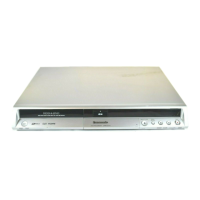
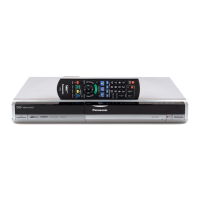


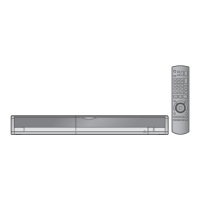
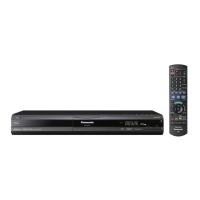
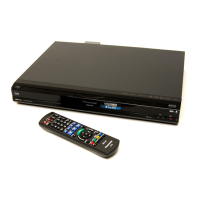
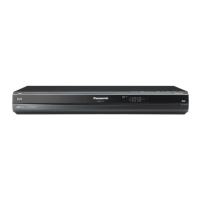
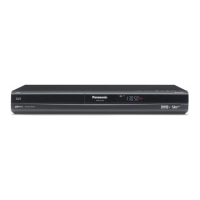
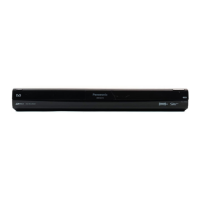
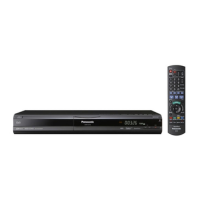
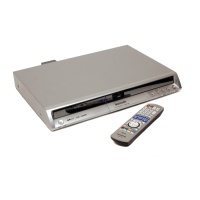
